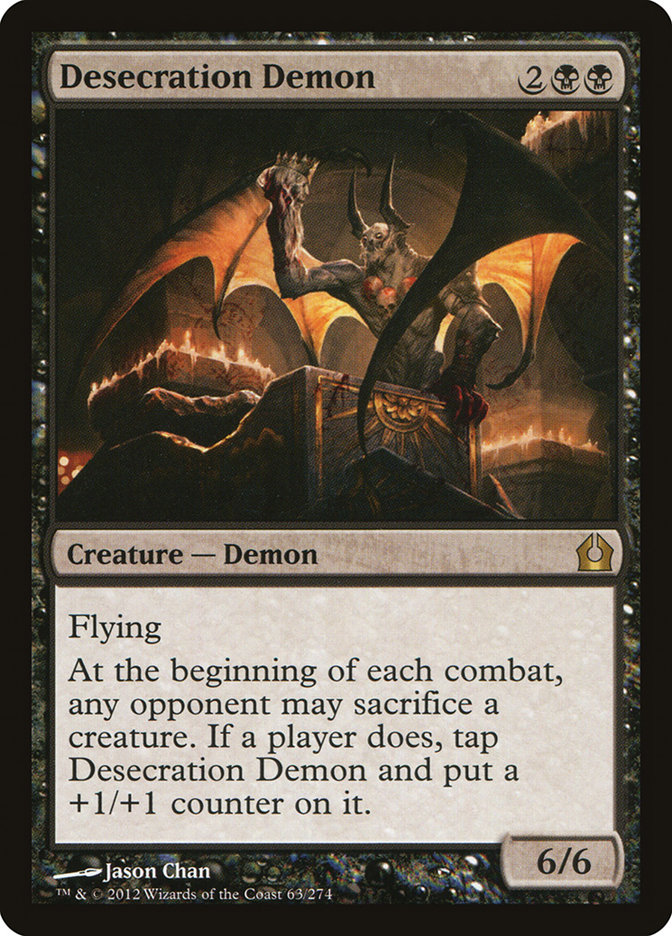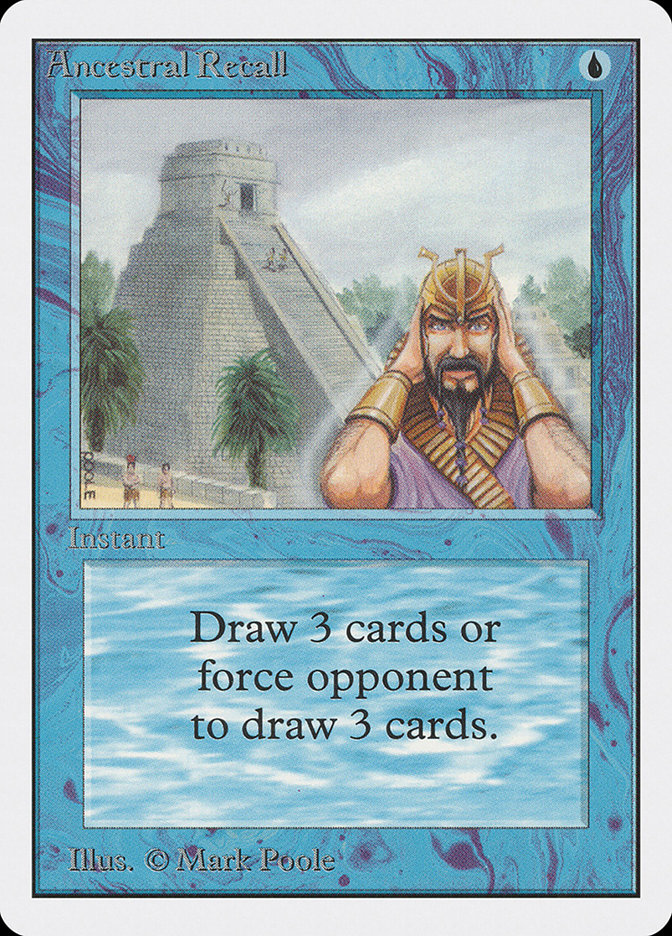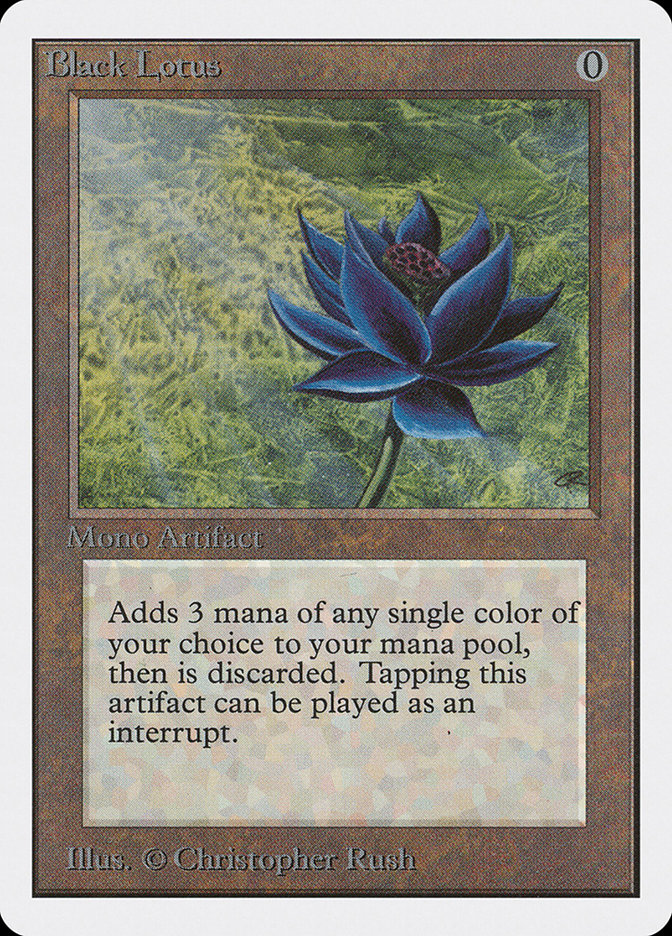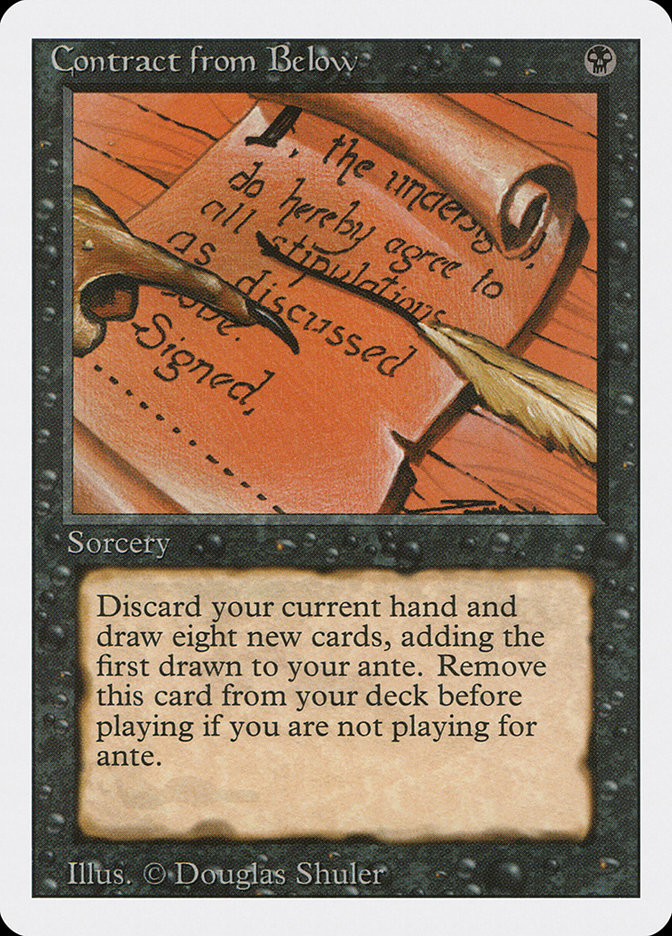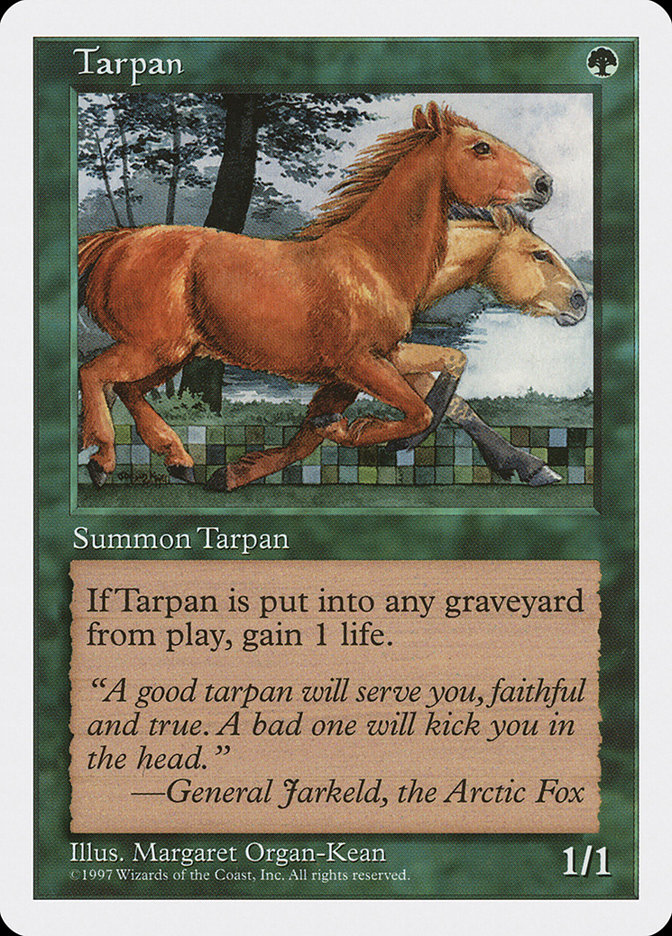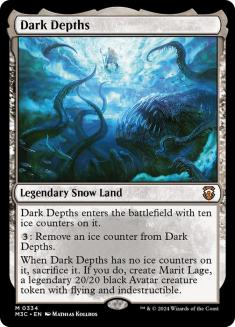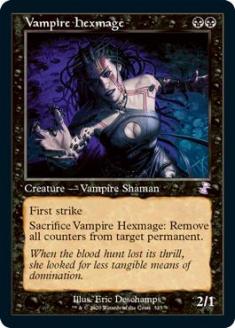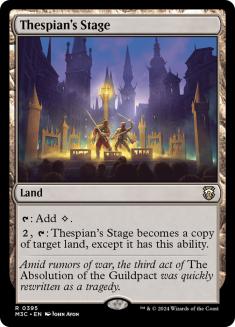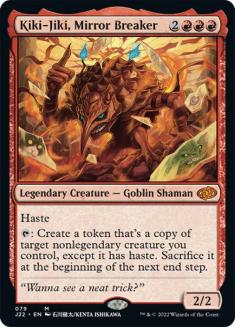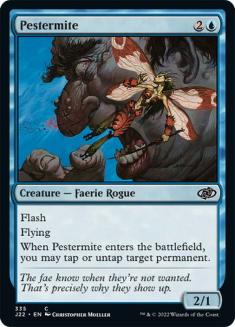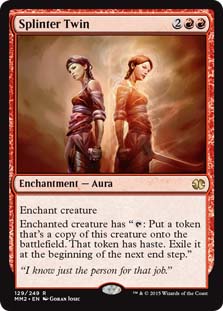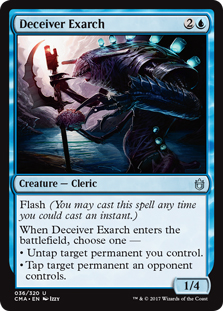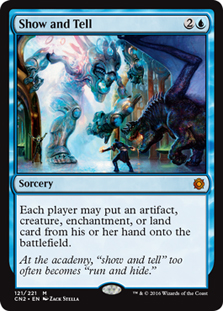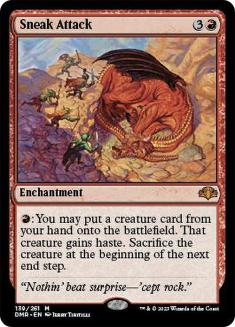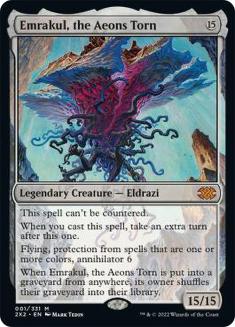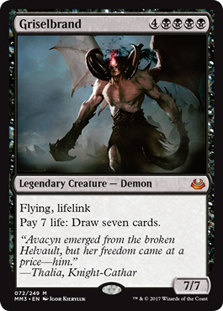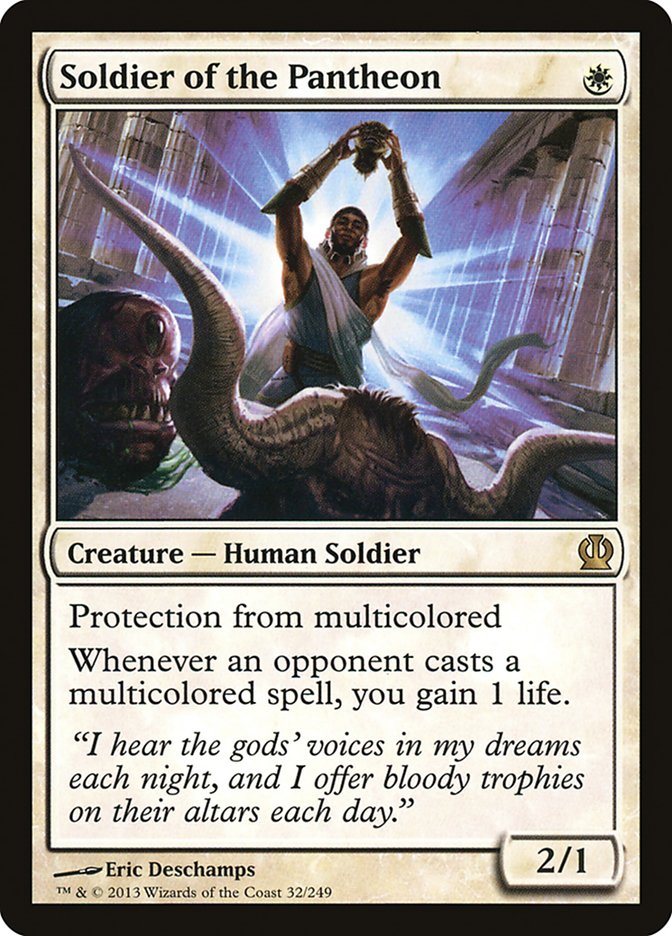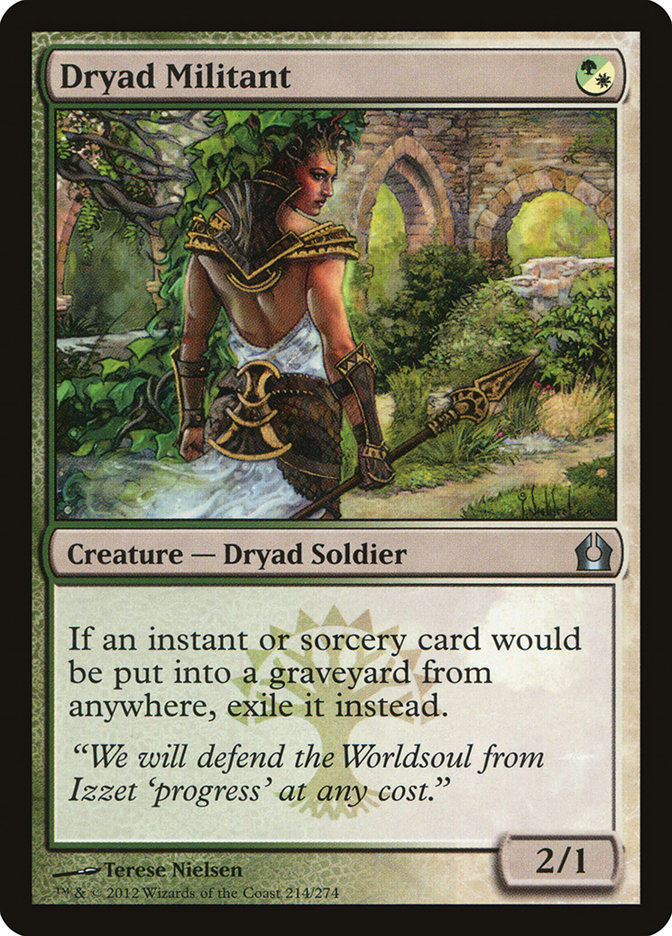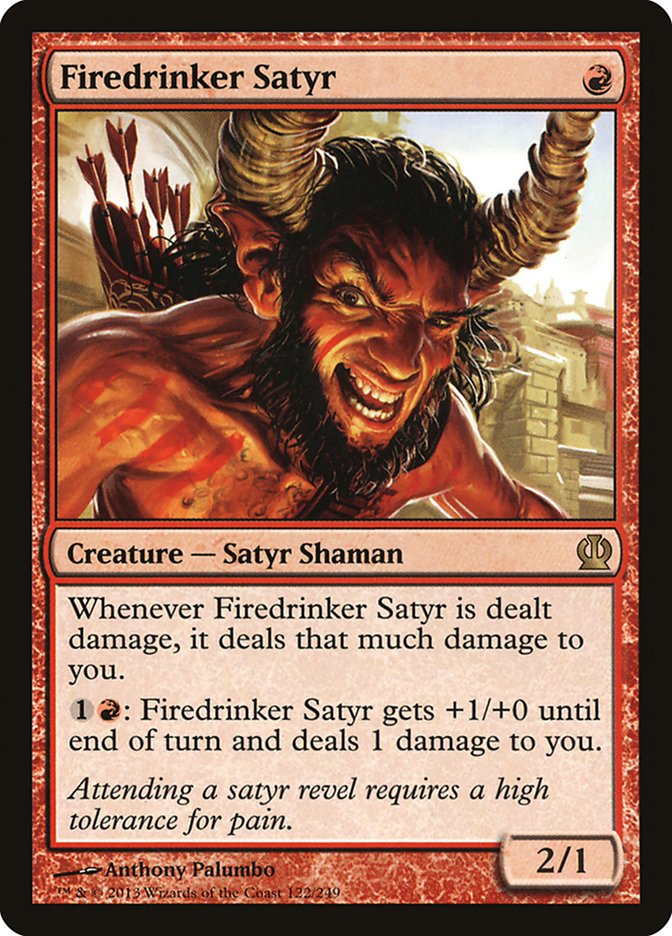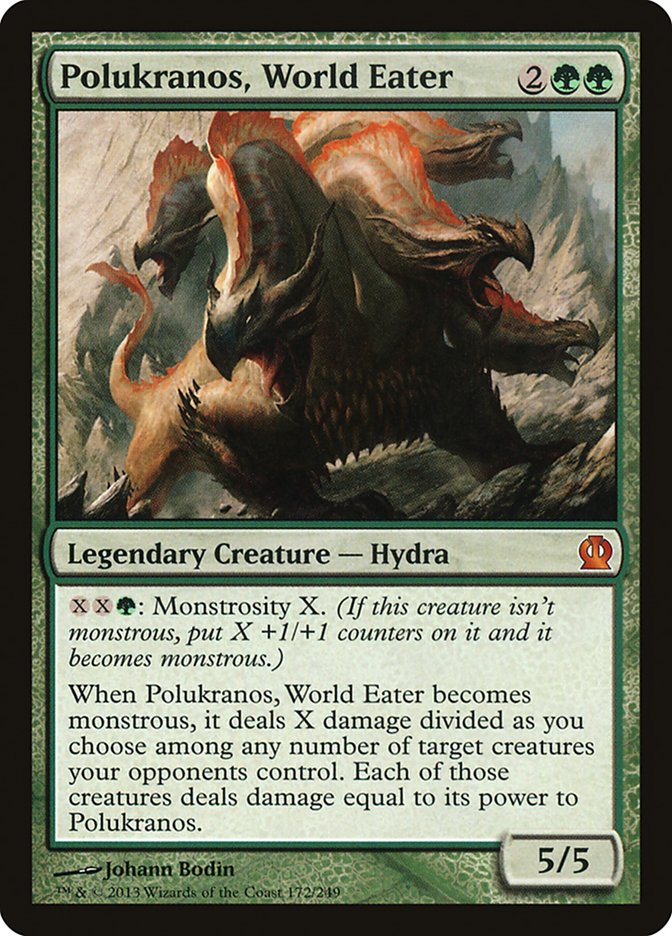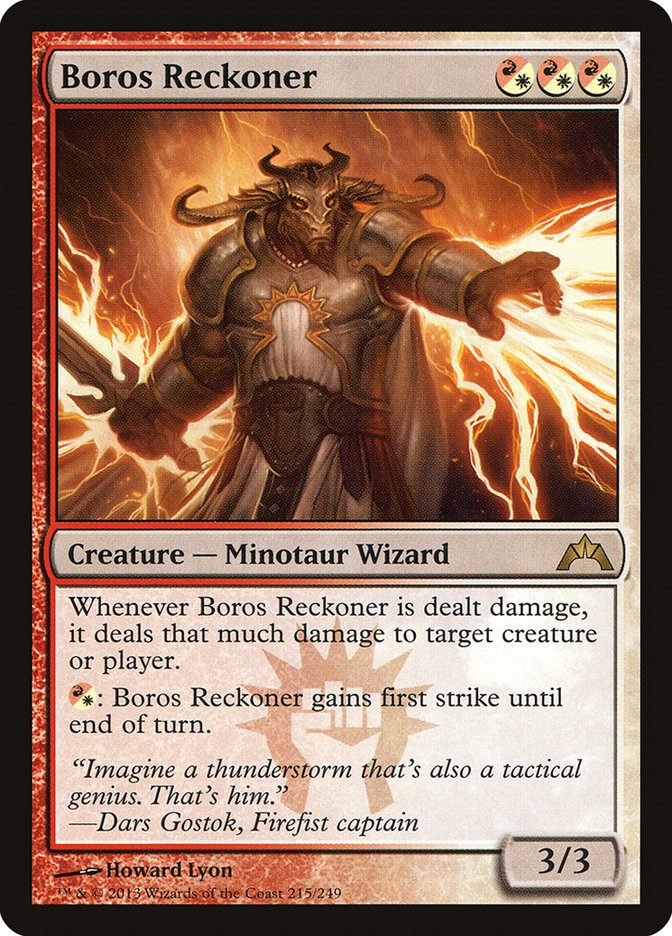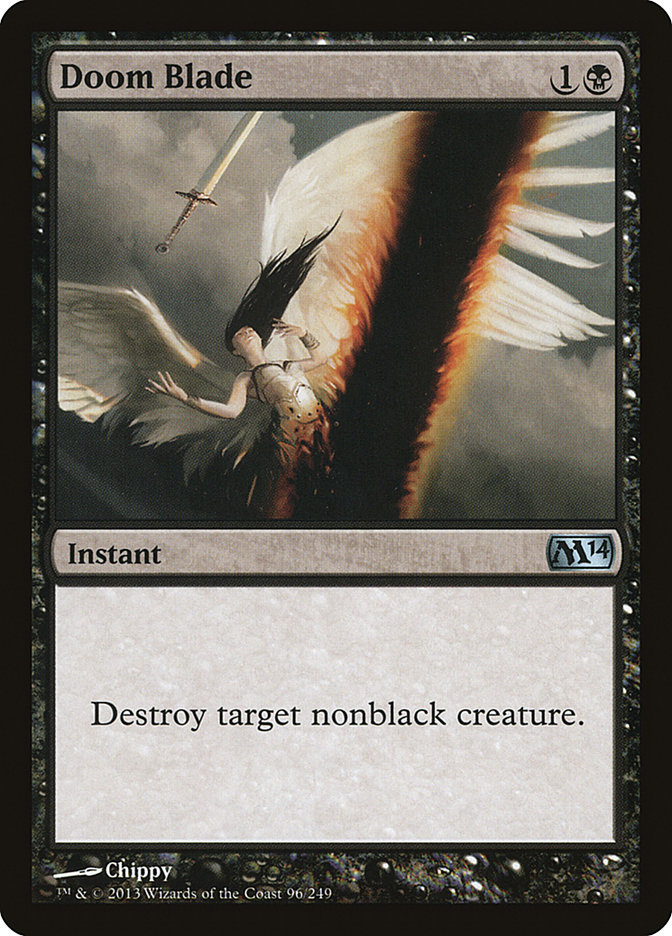Magic is a game that at its core is about the interpretation of context. At every stage of gameplay, starting with one’s deck choice and concluding with the last match of the day, a player’s ability to decipher and understand complex batches of information is tested. The better a player’s ability to make sense of the situations they find themselves in, the better the chance that they will fare well in a tournament.
Don’t Get Sucked Into Thinking About Cards In A Vacuum
Context is important because without it there can be no meaning and no understanding.
The opponent plays a Desecration Demon.
We know from the way that this statement is framed that the opponent was able to produce 2BB and has played a card, but what do we actually know about the aforementioned situation?
Well, we actually know very little because we don’t have any context with which to frame this information. The key point upon which I will be expanding in this article is that the context is actually much more important than the play itself.
Playing a Desecration Demon is neither good nor bad, right nor wrong, powerful nor weak. The card Desecration Demon is a finite thing. All Desecration Demons are exactly the same, and there are no variations of Desecration Demon. Yes, there are other four-drop creatures that can function similarly to a Desecration Demon, but every Desecration Demon is exactly the same.
In chess, every individual character is the same. A knight, a bishop, or a pawn always do the same thing and act according to a specified set of rules. However, as the game unfolds play after play, a certain knight or bishop can be made better given its placement in relation to other pieces on the board. Given the proper strategy and placement, a knight can become more important than even the mighty queen. Given the proper context,relationships between pieces and their values can and do change.
The same is true in Magic.
If you play a Desecration Demon on turn 4 after Thoughtseizeing away the opponent’s removal spell, the card can be contextually very good because its high power to mana cost ration will very quickly end the game. However, if you play a Desecration Demon on turn 15 and the other player casts Sphinx’s Revelation for ten on your end step, given the context the Desecration Demon is likely not very good.
One of the biggest mistakes that players make with regard to their understanding of Magic is that they often remove cards from context when thinking and talking about them.
Ancestral Recall and Black Lotus are broken.
Talk to anybody and they will tell you that Ancestral Recall and Black Lotus are busted Magic cards. What they do for the investment cost is simply too much for too little.
Even in these extreme cases, I would argue that neither Ancestral Recall nor Black Lotus is intrinsically unacceptable but rather is still contextually too powerful.
How often does somebody actually kill their opponent with an Ancestral Recall or a Black Lotus? Not very often. I have personally killed people with both of these cards, but those were very corner cases. (Opponent activates Oath of Druids with no creatures in their library, and with the Gaea’s Blessing trigger on the stack I cast Ancestral Recall and activate the ultimate on Tezzeret, the Seeker, making Black Lotus a creature and attacking.)
Ancestral Recall and Black Lotus do finite things in the game the same way that Desecration Demon does a finite thing. It just so happens that when the Power Nine were created in the very first version of Magic, it was unclear how the game was going to work and what the power level of casting cost to effects ought to be.
Consider this—if Magic would have went the route of other games, where the cards constantly try to one up what came before (rather than operate on a stable power level), it is possible that in some other universe Ancestral Recall and Black Lotus could have become unplayable given the different context.
What if the game was full of free draw 5s and all the best cards didn’t require mana to be cast? Or what if all the best cards could only be cast with mana produced by lands?
Given a completely different set of cards to create the context surrounding Ancestral Recall and Black Lotus, it’s possible that both cards could actually be irrelevant! The Power Nine are good not because they’re inherently powerful but because the context of the surrounding cards makes them good.
Given the ratio of cost to effect that Wizards of the Coast has chosen to use when designing subsequent sets of cards, it’s safe to assume that players will never see a new card that does so much for so little an investment ever again. They have become the gold standard of getting a lot for a little, and because their cost to reward ratio is so high, the cards themselves are drastically warping to any other context in which they’re included. Thus they are banned in every format other than Vintage (where they are restricted to one copy per deck) because their inclusion in any card pool creates a context that is severely warped by their mere presence.
Let’s make a deal.
Contract From Below dwarfs both Black Lotus and Ancestral Recall with regard to what one gets for what one has to pay for it.
Once again, context is everything. The context requirement of playing for an ante can never be met in tournament Magic, which means that this relic from an ancient time will forever be an irrelevant watcher from the sidelines. However, keep in mind that whenever one is playing a format like Five Color in which Ante is allowed and thus Contract from Below is allowed that the Contract is a defining factor around which the context of the format is created.
The same can be said of even the worst cards in Magic. They’re not bad simply because they’re bad. They don’t see play because there isn’t a proper context in which to play them.
A future powerhouse!?
Tarpan is considered to be a bad and unplayable Magic card. I would argue that the card itself isn’t specifically bad but that there simply doesn’t exist a proper context in which there is much of a reason to play with such a card.
Now imagine if this card were suddenly brought into print:
Horse Friend
GG
If you control a card named "Tarpan" you win the game.
0: Search your library for a card named Tarpan and put it onto the battlefield and then shuffle your library.
2/2
If this card existed, Tarpan would become a pretty good Magic card!
"But wait!" you say. "Tarpan still sucks—it’s the other card that’s actually good."
Actually, it isn’t that either card is specifically good on its own but rather that both cards existing at the same time in the same place creates a context where that strategy becomes useful.
If Horse Friend is so good, consider this—how good is Horse Friend in Modern, where Tarpan isn’t legal? Not very good. Context is everything.
I know this is a ridiculous scenario and completely irrelevant because Wizards would never print a card like Horse Friend that randomly combines with some other random unplayable card to create a game winning combo . . .
Right?
Oh, wait. It happens constantly.
Metagames Are All Contextual
In the Sphinx’s Revelation for ten against a topdecking opponent example, it’s pretty easy to see why Magic players make statements like the one above. The card is capable of creating an insurmountable advantage that can win the game outright in the right kind of deck.
To be fair, I agree with certain aspects of the statement "Sphinx’s Revelation is the best card in Standard" and recognize that Sphinx’s Revelation is the defining card of the Standard metagame.
Here’s a Sphinx’s riddle for you:
If Sphinx’s Revelation is the best card in Standard, why doesn’t it see much play in Modern, Legacy, or Vintage?
It should be fairly obvious given the argument I have been framing thus far that the reason Sphinx’s Revelation isn’t very good outside of Standard is that the context is different. The older formats include a multitude of opposing strategies that are much faster and much more disruptive that invalidate the strategy of trying to get eight mana and tap out for one big spell.
Sphinx’s Revelation is therefore a defining feature in Standard because within the context of the other available cards, trading one for one while making land drops and then casting one big spell to refill one’s hand is viable and potent. There are no Wild Nacatls, Pyromancer Ascensions, or Wastelands to specifically attack blue Revelation decks in Standard. In addition, the small aggressive creatures that do exist in Standard aren’t very impressive:
What costs one and attacks for two?
These creatures are badly outclassed by the three- and four-drop creatures in the format:
What costs three or four and makes things that cost one or two irrelevant?
Ari Lax wrote about this last week, and his analysis was spot on. The jump between casting costs in creatures creates a situation in which the lower drops very quickly become invalidated by the bigger creatures up the curve.
Every creature deck is almost blackmailed into playing higher up the curve in order to combat other creature decks, both in the sense of trumping opposing creatures and to not be outright trumped by opposing four-drops. Since the big creatures are so important in creature-on-creature matchups, the format naturally gravitates toward all beatdown decks being midrangey, which is extremely favorable for the people playing Sphinx’s Revelation decks.
Since Return to Ravnica was a multicolored block, the format is also full of cards with multiple colors of mana in their casting cost requirements. Generally speaking, a multicolored cost means that a card will do more for the quantity of mana it costs because the quality of the mana in that cost is higher.
For instance:
Same quantity, but very different quality.
Gold cards tend to have better stats than monocolored cards because they have the prohibitive cost built in of being more difficult to cast.
In Standard, it stands to reason that because Return to Ravnica block makes up half the card pool that at least half of the highest-quality cards stat-wise are multicolored.
Standard is also defined by its lack of mana fixing. There’s only one cycle of dual lands that come into play untapped, and all other dual lands enter the battlefield tapped. If one wants to play two colors, it is for certain that they will have to play a nonzero amount of lands that enter the battlefield tapped.
Players are incentivized to play multicolor cards because they have better abilities for their mana cost, but at the same time they’re really forced to pay for that quality by having a much slower land base.
Sphinx’s Revelation being so well positioned in Standard results from slow and inconsistent mana bases and a tendency of aggro decks to constantly gravitate toward midrange in order to combat other creature decks.
"Metagames" are also a study in context.
The Season One Invitational in Charlotte showed us that when Sphinx’s Revelation control becomes too popular and too predictable that people can and will show up playing fast red aggro as a hedge against it.
One important thing to realize about Magic is that the metagame is always predictably evolving and cycling from one place to the next. It was predictable that fast red aggro was going to be played and be good two weeks ago because Esper Control had been riding such a tidal wave of success. In my Esper Control article the week before the Invitational, I wrote that fast aggro was Esper’s Achilles’ heel and to expect it in the coming weeks.
The fact of the matter is that it’s also predictable that red aggro will quickly meet its downfall as the following chain of events occurs. Players will move off Esper because they’re afraid of red aggro, and players once again will gravitate toward midrange to beat fast aggro.
So here’s another question:
If the metagame is so predictable, why doesn’t everybody just arrive at the same conclusion at the same time and play the same deck?
That is a question that deserves a bit of analysis.
If it was predictable that fast red would beat the Esper Control at the Season One Invitational and that midrange decks would beat the aggro decks the following week, why would people be playing the decks that get preyed upon?
I have often pondered this question, and here is in my best estimation why things continually work out the way that they do:
Group One: Players who simply pick up and play what won last week.
These players assume that the deck is powerful enough to win a tournament because it just put up a good result and the deck is obviously current because it just did well the week before.
It’s also a big incentive to these players that because the deck is the deck of the day, they will be able to find lots of information in new articles about how to play it.
Group 2: Players who only have one deck that they play for one reason or another.
You will obviously recognize these players from your experience, as there always seems to be the individual you have played against six weeks in a row at FNM who always plays deck X.
This particular class of player only owns and wants to play one specific deck, and that is exactly what they do. Come hell or high water, good or bad in the cycle of the metagame, this player is going to be playing their favorite deck.
A lot of times players only own the cards to play one deck, and this factors into the decision as well. I don’t necessarily frown upon this approach to the metagame. Experience, practice, and familiarity are important, and they do gain some number of percentage points when they have a mastery of a specific deck.
A lot of the time the person who is playing the familiar deck has a very good chance of overcoming the bad matchups, especially against the "jump onboard the new thing" players, simply because they understand what to do better than their opponents.
Group 3: Players who will knowingly take a deck into a predictably hostile metagame but have a plan for beating the bad matchup.
These are the players who knew that red aggro would be rearing its head at the Season One Invitational but tried to tune their Esper decks for percentage points against that deck. Many times this category will include players from group 2.
Showing up with a version of "the deck to beat" that beats the decks that are designed to beat it is often a very well positioned place to be.
It is always important to consider that in a metagame certain things are bound to be certain no matter what. In Standard for instance, Sphinx’s Revelation is a metagame-defining force no matter whether it is in a peak or valley in the metagame cycle.
As I discussed earlier, the context of Standard conspires to make that particular archetype a very strong choice because of the creatures and the mana. In addition, the U/W/x color combination has a lot of versatile cards (Detention Sphere; Dissolve; Supreme Verdict; and Elspeth, Sun’s Champion) that can be arranged to make the deck adaptive and competitive no matter what other cards come into or fall out of favor.
Similarly, G/R/x Monsters has a lot of contextually good cards and versatile tools that allow it to constantly reinvent itself around a few core cards: Elvish Mystic; Sylvan Caryatid; Domri Rade; Polukranos, World Eater; and Stormbreath Dragon.
Mono-Black Devotion and B/W Midrange are other decks that fall into this camp of too good to fail. These strategies perform well because they have flexibility and a core group of cards that do something that tends to be better than or good against other available options.
Understanding the context surrounding cards, decks, and lines of play is of critical importance in the game of Magic because context is what defines the value of all cards, decks, and plays. In Magic nothing is invariably good or bad, but rather all things have value defined by the context in which they are being observed.

